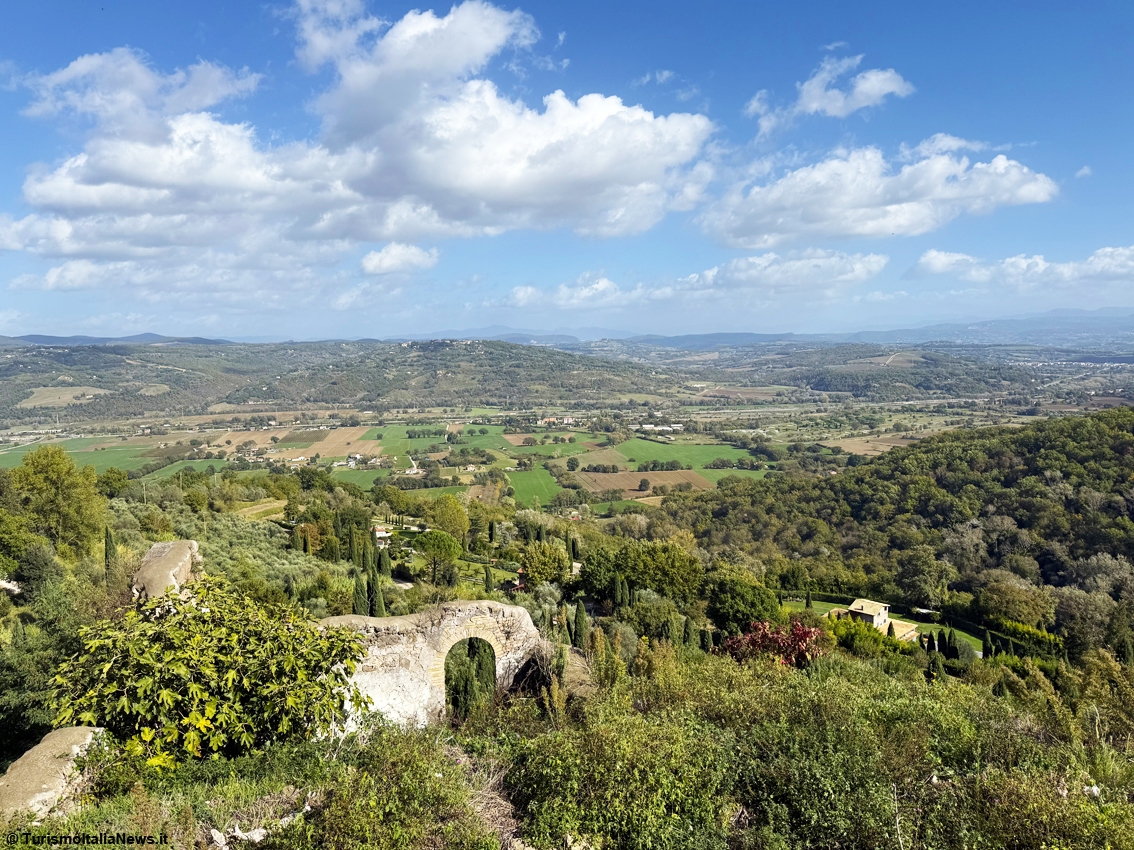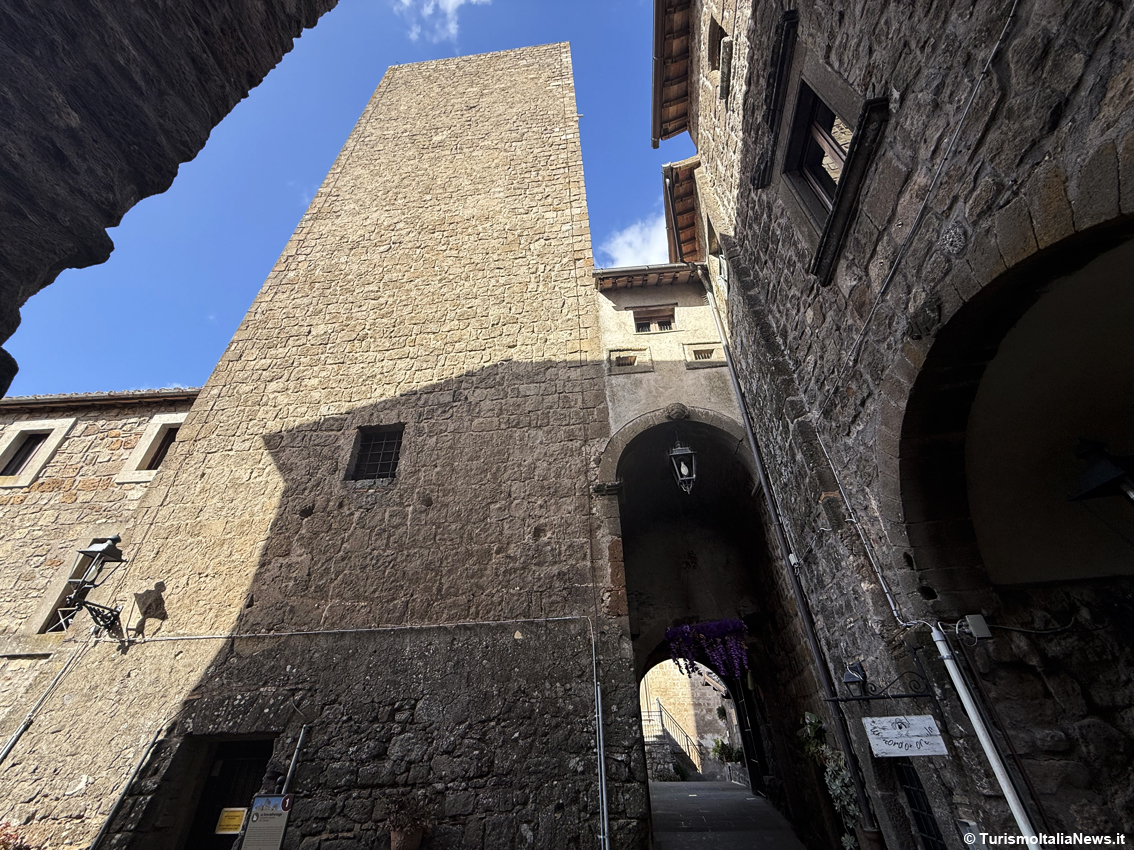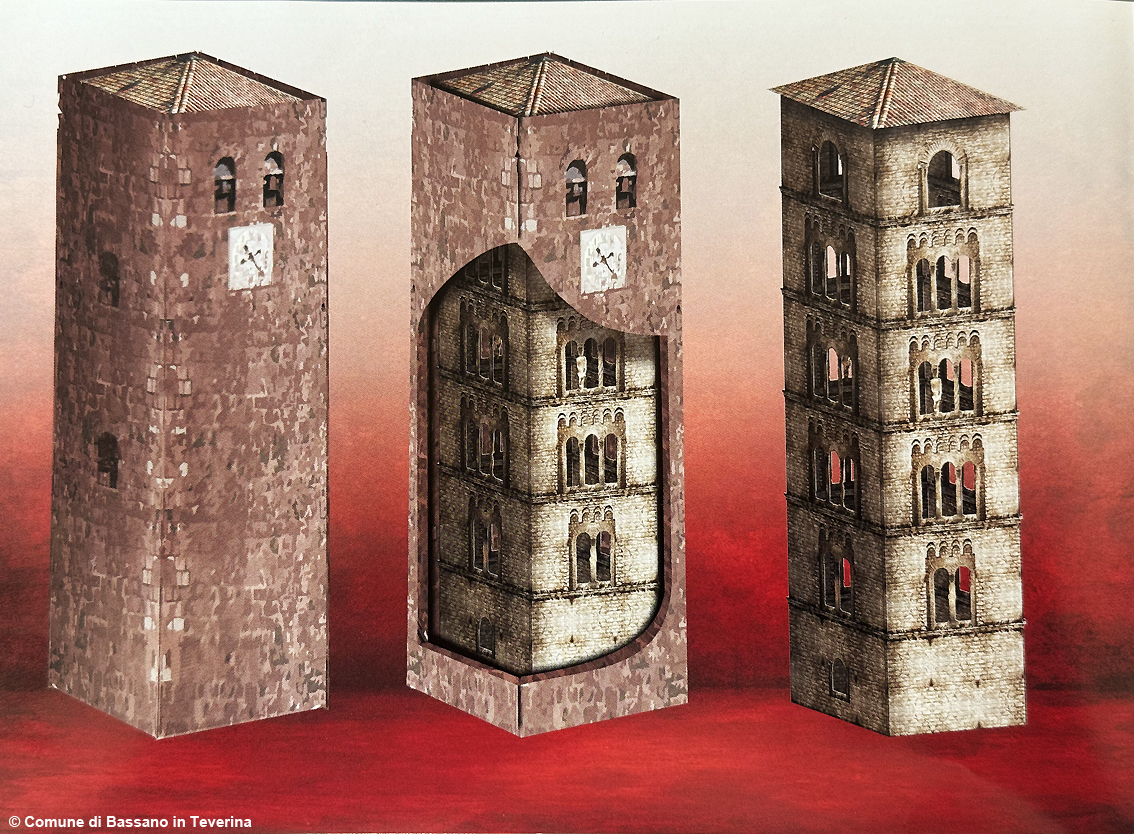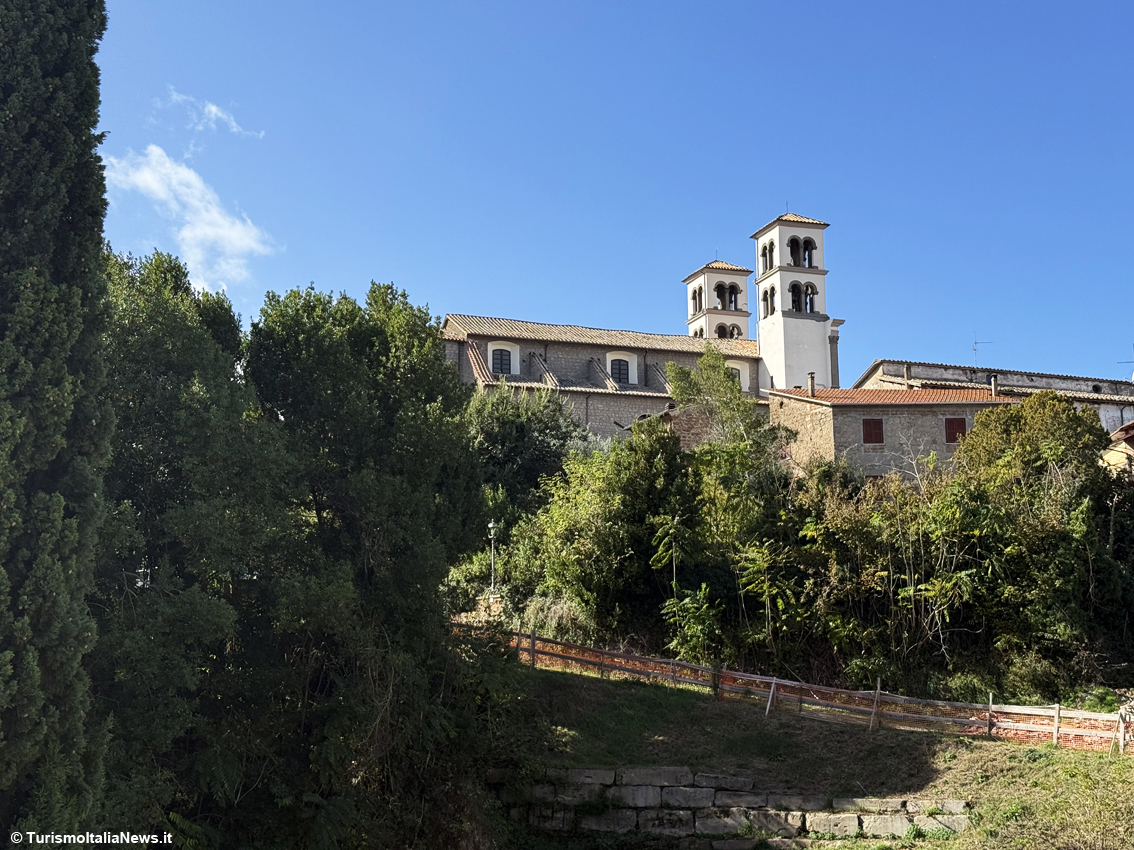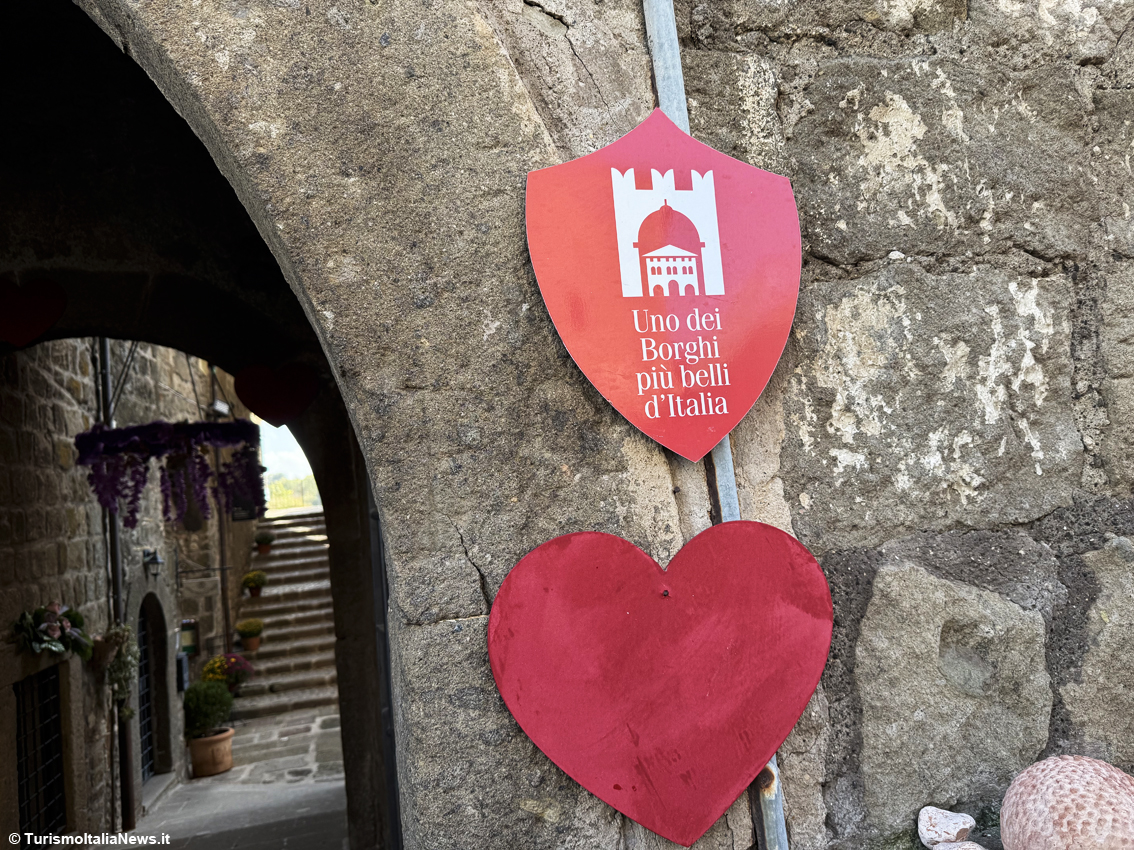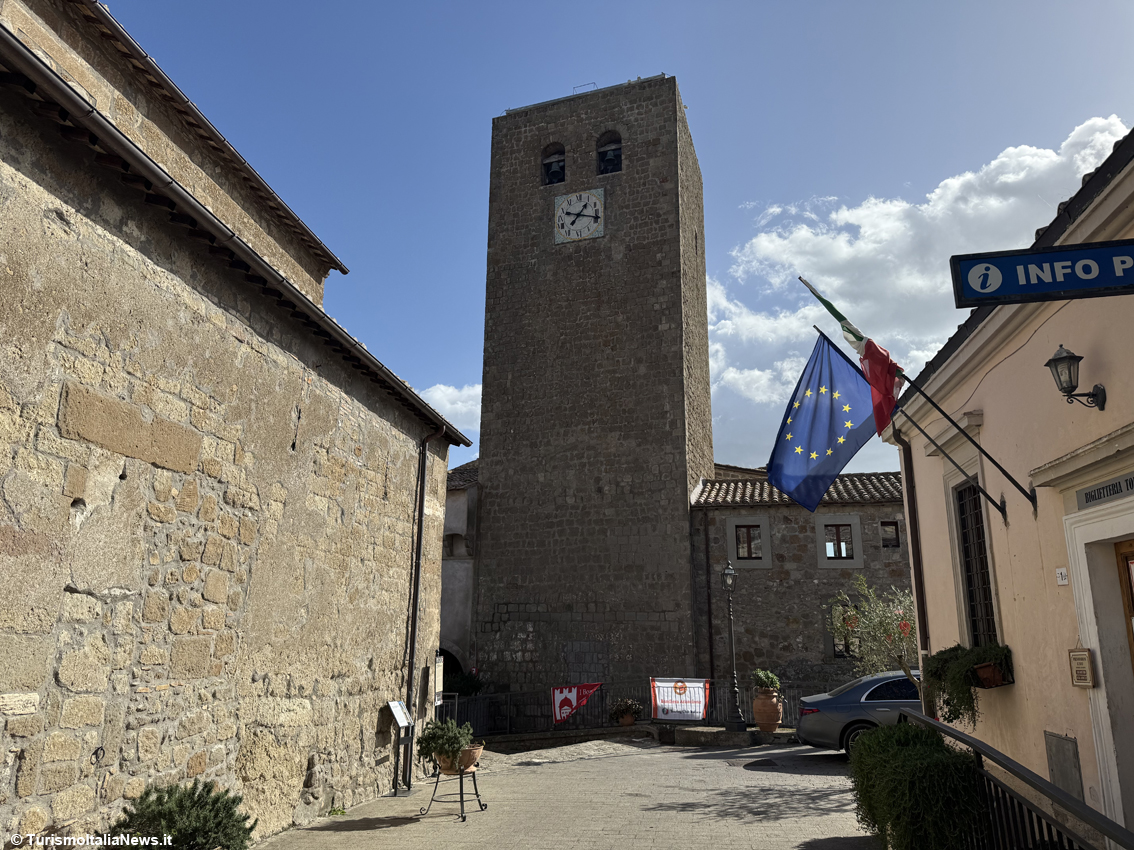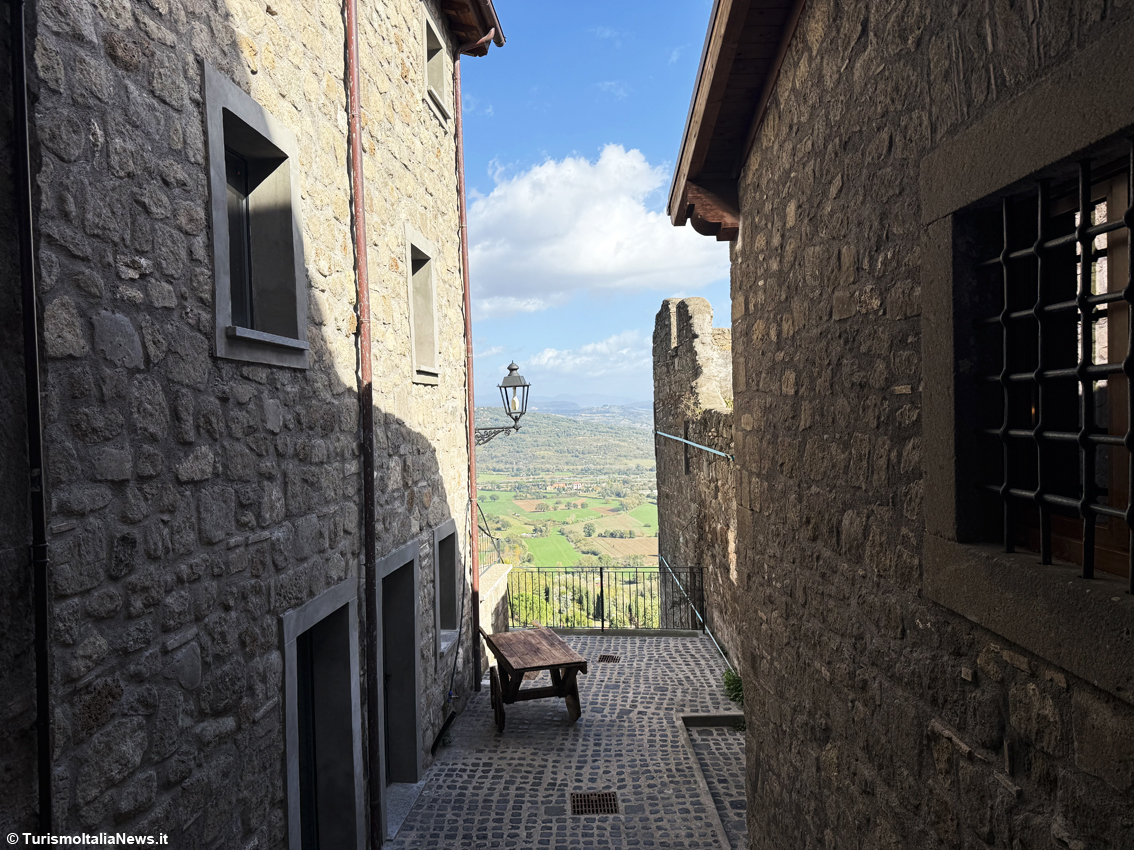ITALY | The stone secret of Bassano in Teverina: the unsolved mystery of the Bell Tower hidden inside the Clock Tower
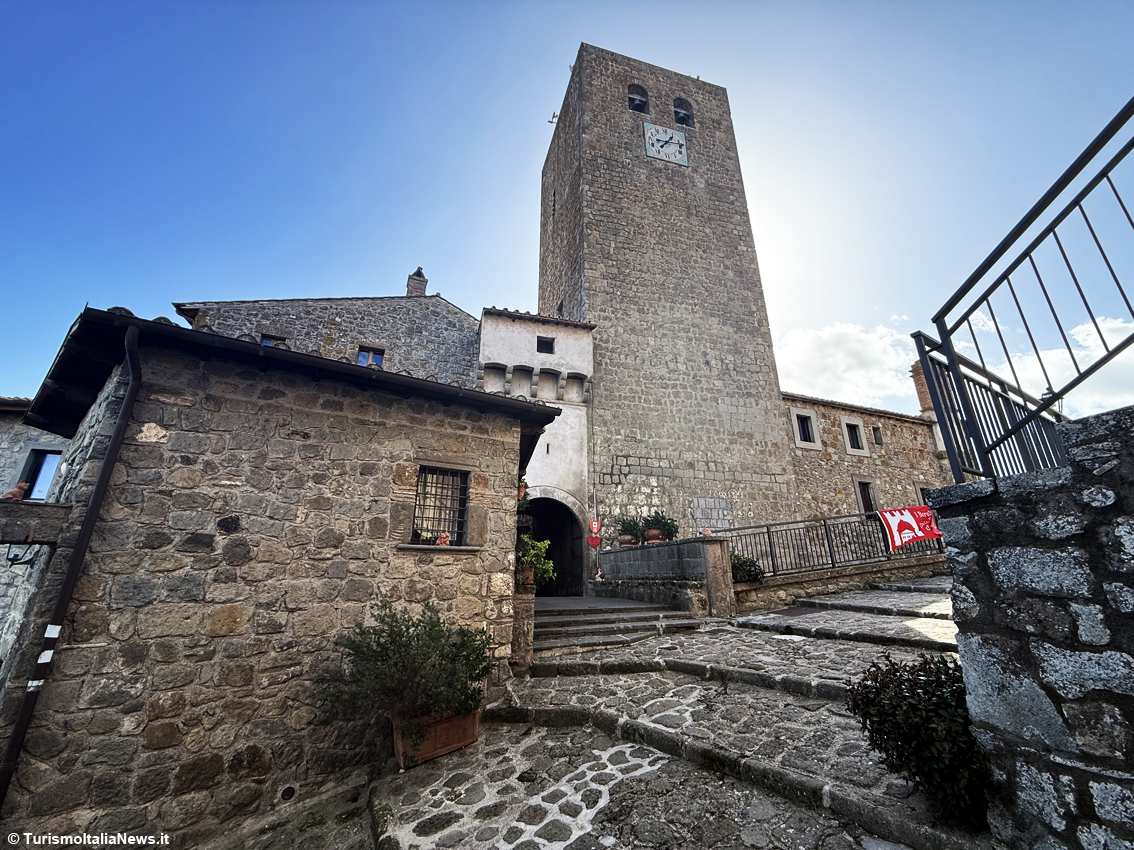
by Giovanni Bosi, Bassano in Teverina / Lazio / Italy
There are places that seem to have stepped straight out of a Gothic novel — where time and stone conspire to guard secrets no one has ever fully unraveled. One such place lies in northern Lazio: Bassano in Teverina, a small medieval village perched above the Tiber Valley, just a few kilometers from Viterbo and Orte. Here, amid the silent alleyways and peperino-stone walls, hides a unique architectural enigma — a Romanesque bell tower concealed within a Renaissance tower, forgotten for centuries and rediscovered only in the 1970s. A mystery still unsolved, and truly one of a kind.
(TurismoItaliaNews) The protagonist of this story is the imposing Clock Tower, built around the mid-16th century. Rising nearly twenty-five meters high, it dominates the landscape like a stone sentinel — and deep within its heart, it guards a treasure that no one suspected for centuries: the 11th-century bell tower of the nearby Church of Santa Maria dei Lumi, once an integral part of that sacred complex. The bell tower remains perfectly preserved, adorned with double and triple lancet windows, twisted columns, and anthropomorphic figures carved in stone — details that have led experts to nickname it the “animated bell tower”, for its vibrant, almost unsettling expressiveness.
How an entire medieval tower came to be enclosed, sealed, and hidden inside a Renaissance structure remains, even today, an unsolved riddle. No written record explains the reason. Historians speculate that, sometime in the 16th century, a sudden and mysterious decision led to the construction of the new tower around the old one — perhaps for structural reasons, or perhaps to conceal something that was meant to be forgotten. A true case of damnatio memoriae: an enforced oblivion, as if the bell tower itself had been condemned to vanish from the sight of the world.
Its rediscovery came only in 1970, during structural consolidation works on the Clock Tower. When workers began removing parts of the masonry, they were confronted with a surreal vision: inside the tower, perfectly hidden, stood another — older, elegant, and intact — complete with its Romanesque windows and peperino decorations. It was as if a monument lost to time had suddenly emerged from the shadows. Architects and scholars from across Europe were left in awe.
Today, visitors to Bassano in Teverina can climb inside the Clock Tower and gaze upon the hidden bell tower up close — an experience that blends wonder with mystery. Through an ingenious system of mirrors, one can admire every detail of its inner decorations: the anthropomorphic columns, the capitals carved with vegetal motifs — silent witnesses to the craftsmanship of artisans, perhaps from northern Italy. Walking through it feels like stepping inside an enigma: two concentric towers, one within the other, separated by centuries of history yet still perfectly aligned. Just steps away, the Church of Santa Maria dei Lumi completes the site’s mystical atmosphere. Built in the 11th century atop an ancient pagan site, it preserves 16th-century frescoes and an astonishing presence of Templar symbols: crosses, lilies, Solomon’s knots, even depictions of the Baphomet carved into peperino capitals and doorframes. A legacy that deepens the aura of mystery enveloping the village.
Bassano in Teverina, with its Clock Tower concealing a thousand-year-old bell tower, remains a singular case in the world. Nowhere else does such an intertwining of eras and symbols survive — a double monument seemingly designed to protect an inaccessible secret. Scholars continue to debate the reasons behind it, but perhaps the answer lies in its very beauty: a monument born from the meeting of faith and mystery, of light and shadow, of humankind and time itself. Those who climb to the top of the tower and gaze out over the Tiber Valley understand it at once: in Bassano in Teverina, history is not merely told — it hides, reveals itself, and continues to beat within the stone. And there is, indeed, an invisible thread that runs through the Tuscia region, Umbria, and the valleys of Lazio — weaving together villages, caves, waterfalls, and ancient secrets. A thread that also binds Bassano in Teverina.
The village of the “hidden bell tower” and storytelling stones is now an active member of both Dmo Expo Tuscia and the “Shared Heritage” (Patrimoni Condivisi) cultural network — a project that goes beyond tourism promotion to build a living web of places, stories, and communities. Its aim is to rediscover an entire territory as a single, vast heritage landscape. Through its participation, Bassano in Teverina becomes part of a network connecting some of the most fascinating destinations of central Italy: from the Chia Waterfalls Park to the underground worlds of Orte, Narni, Rieti, and Orvieto, to the Monte Soratte Bunker and the Pro Loco of Rignano Flaminio. A network that invites travelers to move slowly and curiously, exploring a hidden geography made of subterranean wonders and landscapes suspended between nature and history.
The idea behind Shared Heritage is simple yet revolutionary: to encourage cultural mobility between sites by offering a symbolic one-euro discount on entry tickets to visitors who present proof of a visit to another site in the network within the same year. A small gesture capable of creating a virtuous circle among villages — rewarding those who choose a mindful, widespread, and sustainable form of tourism.
“With these initiatives,” explains Bassano in Teverina’s mayor, Alessandro Romoli, “we strengthen our collaboration with neighboring territories and offer visitors a richer, more complete experience — enhancing our local excellence while promoting sustainable tourism.” His words capture the spirit of the project: not competition, but cultural cooperation — turning small towns into protagonists of a shared renaissance. But Bassano in Teverina is more than a participant; it’s an innovator and an inspiration. It has even been awarded the national “Livio Scattolini Prize” by I Borghi più belli d’Italia (The Most Beautiful Villages of Italy) association. The award, presented in Corinaldo, Marche, honors a vision of governance that successfully blended public initiatives and private investment to regenerate the historic center — restoring life and social purpose to its ancient heart.
Mayor Romoli dedicated the award to the entire community: “This recognition fills us with pride, and we share it with all the citizens of Bassano. From the beginning, we believed that the physical rebirth of the village could coincide with the rebirth of its community spirit. Today, if we have succeeded, it is thanks to everyone’s participation and commitment”. The recovery plan reopened long-abandoned spaces, transforming them into places of gathering and culture — bringing life back to the historic core. “Today Bassano in Teverina is more than a village,” adds Vincenzo Peparello, president of Dmo Expo Tuscia. “It is a laboratory of rebirth. Its Clock Tower, hiding the mysterious Romanesque bell tower within — a world-unique monument — has become a symbol of rediscovered identity. A place where mystery and memory intertwine with the present, and where beauty is not only to be admired but to be shared”.
Throughout the old town, projects continue for the restoration and revitalization of heritage buildings, many left abandoned for decades. Concrete actions are being carried out directly by the Municipality of Bassano in Teverina — also thanks to funding from the Pnrr (National Recovery and Resilience Plan) — as well as by private citizens, such as entrepreneur Giuseppe Mandica, who created La Taverna del Drago and an “albergo diffuso”, a scattered hotel within the village.



